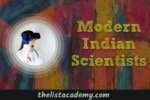21 Ancient Mathmaticians And Scientists In India
The Indian science tradition is one of the oldest scientific traditions in the world. The rise of science in India took place about five thousand years ago. The evidence of the Indus Valley obtained from the excavations of Harappa and Mohenjodaro reveals the scientific sight of the people and the use of scientific instruments. In the field of medical science in ancient times, discoveries made in the field of astronomy and mathematics have a very important contribution. Their discoveries are still being used in one way or another.
Today’s new discoveries and theories were proposed by Indians hundreds of years ago. The tradition of scientific research and inventions in India has been going on since time immemorial. At the time when the nomadic tribes were settling in Europe, the people of the Indus Valley lived in a well planned city. The ruins of the cities found in excavations at Mohan Jodaro, Harappa, Kali Banga, Lothal, Chanhudaro Banwali, Surkotada, etc. are the direct evidence of this.
Mathematics and geometry had developed considerably during the Vedic era. Vedic period could be calculated as long as Indian. People of Vedic period had a good knowledge of astronomy. The Vedic Indians had knowledge of 27 constellations. They were familiar with the division of time in the form of years, months and days. A sage named ‘Lagadh’ arranged the then astronomical knowledge in ‘Astrology Vedang’. The distinctive achievement of the Vedic era was in the field of medicine.He also used to do post mortem for microscopic study of the body. People had excellent knowledge about natural herbs and their medicinal properties. Ancient doctors were well aware of the importance of the nervous system and spinal cord. Knowledge of the principles of climate change, presence of microorganisms in the body and genetic factors causing disease etc.
At that time, the development of seed mathematics, geometry, chemistry, physics, metallurgy, medicine, astronomy was at its peak. The sages and monks of India were the scientists of that time. So let’s know about some such great personalities today –
Charak
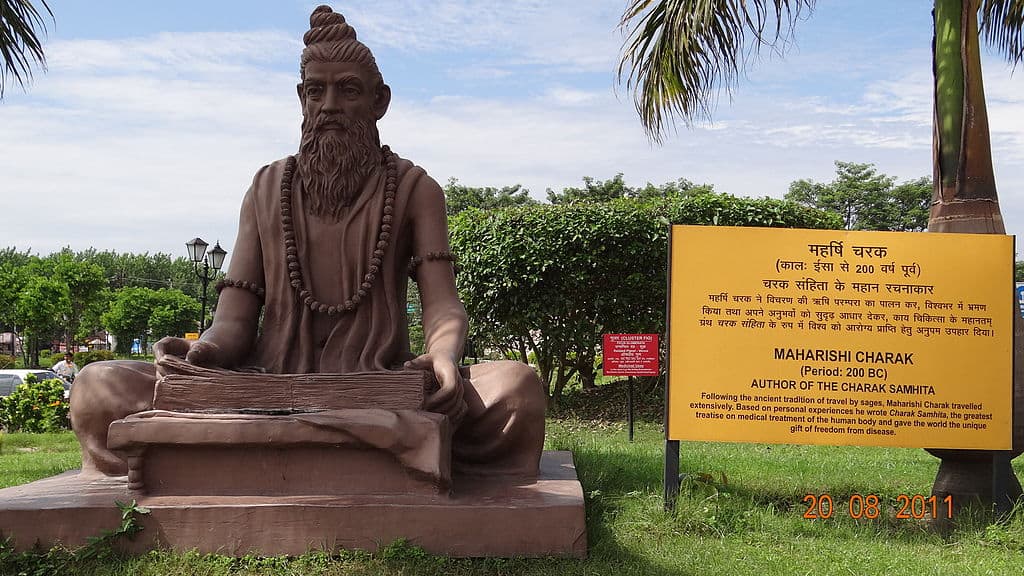
Charaka (Sanskrit: चरक, romanized: Caraka, fl. c. 100 BCE – 200 CE) was one of the principal contributors to Ayurveda, a system of medicine and lifestyle developed in Ancient India. He is known as the compiler or editor (Sanskrit: प्रतिसंस्कर्ता, romanized: pratisaṁskartā) of the medical treatise entitled Charaka Samhita (Sanskrit: चरकसंहिता, romanized: Carakasaṁhitā). Charaka has been identified as a native of Kashmir. The treatise that Charaka compiled is one of the foundational treatises of classical Indian medicine and is regarded one among the Brihat-Trayee (the Greatest – trio) of Ayurveda (Sanskrit: आयुर्वेद, romanized: āyurvēda).
Read More About Charak / Source
Sushruta
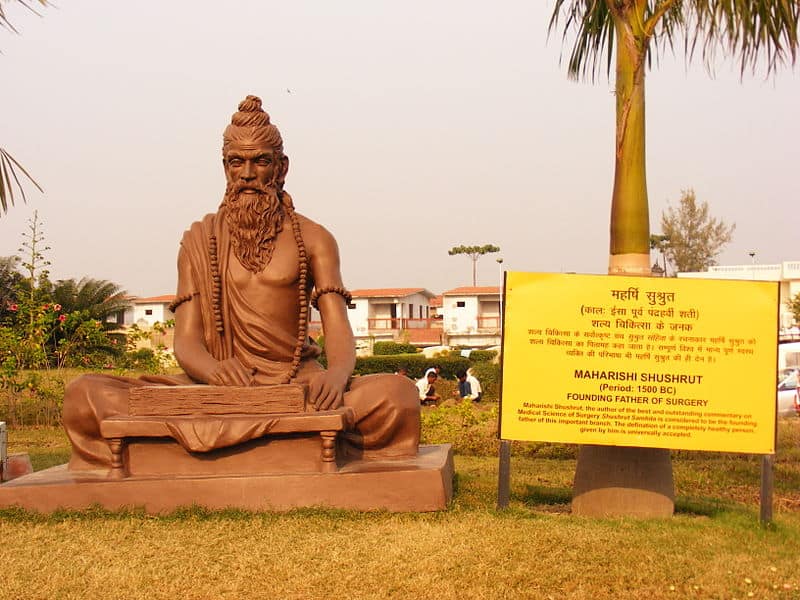
Sushruta, or Suśruta (Sanskrit: सुश्रुत, IAST: Suśruta, lit. “well heard”) was an ancient Indian physician known as the main author of the treatise The Compendium of Suśruta (Sanskrit: Suśruta-saṃhitā). The Mahabharata, an ancient Indian epic text, represents him as a son of Vishvamitra, which coincides with the present recension of Sushruta Samhita. Kunjalal Bhisagratna opined that it is safe to assume that Sushruta was the name of the clan to which Vishvamitra belonged. He is one of a number of individuals described as the “Father of surgery” and “Father of Plastic Surgery”.The Sushruta Samhita is one of the most important surviving ancient treatises on medicine and is considered a foundational text of Ayurveda. The treatise addresses all aspects of general medicine, but the translator G. D. Singhal dubbed Suśruta “the father of surgery” on account of the detailed accounts of surgery to be found in the work.The Compendium of Suśruta locates its author in Varanasi.
Read More About Sushruta / Source
Aryabhata
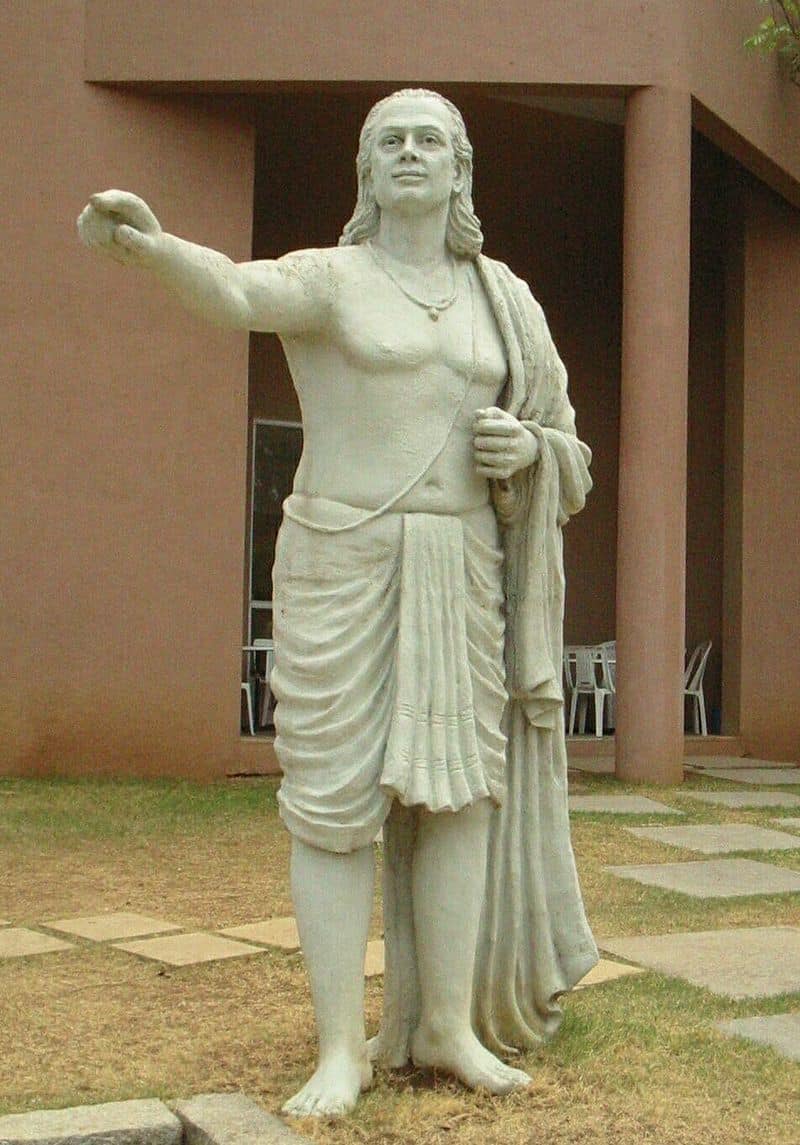
Aryabhata (Sanskrit: आर्यभट, ISO: Āryabhaṭa) or Aryabhata I (476–550 CE) was the first of the major mathematician-astronomers from the classical age of Indian mathematics and Indian astronomy. His works include the Āryabhaṭīya (which mentions that in 3600 Kali Yuga, 499 CE, he was 23 years old) and the Arya-siddhanta.
For his explicit mention of the relativity of motion, he also qualifies as a major early physicist.
Read More About Aryabhata / Source
Vagbhata
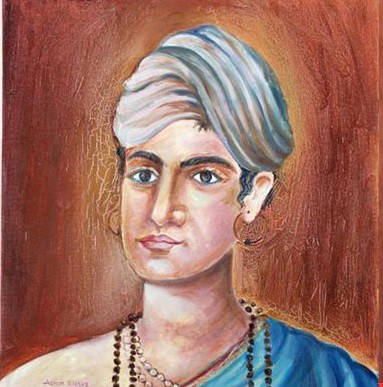
Vāgbhata (वाग्भट) is one of the most influential classical writers of ayurveda. Several works are associated with his name as author, principally the Ashtāṅgasaṅgraha (अष्टाङ्गसंग्रह) and the Ashtāngahridayasaṃhitā (अष्टाङ्गहृदयसंहिता). The best current research, however, argues in detail that these two works cannot be the product of a single author. Indeed, the whole question of the relationship of these two works, and their authorship, is very difficult and still far from solution. Both works make frequent reference to the earlier classical works, the Charaka Samhita and the Sushruta Samhita. Vāgbhata is said, in the closing verses of the Ashtānga sangraha, to have lived in Sind, undivided India. (today in Pakistan), and to have been the son of Simhagupta and pupil of Avalokita. He was a Buddhist, as is shown by his explicit praise for the Buddha by name at the start of the Ashtāngasangraha, and his praise of the Buddha under the title “Unprecedented Teacher” in the opening verse of the Ashtānga hridayasamhitā. His work contains syncretic elements.
A frequently quoted erroneous suggestion is that Vāgbhata was an ethnic Kashmiri, based on a mistaken reading of the following note by the German Indologist Claus Vogel: “..judging by the fact that he expressly defines Andhra and Dravida as the names of two southern peoples or kingdoms and repeatedly mentions Kashmirian terms for particular plants, he is likely to have been a Northerner and a native of Kashmir…”. Vogel is speaking here not of Vāgbhata, but of the commentator Indu.
Vagbhata was a disciple of Charaka. Both of his books were originally written in Sanskrit with 7000 sutra. According to Vagbhata, 85% of diseases can be cured without a doctor; only 15% of diseases require a doctor.
Sushruta, “Father of Surgery” and “Father of Plastic Surgery”, Charaka, a medical genius, and Vagbhata are considered to be “The Trinity” of Ayurvedic knowledge, with Vagbhata coming after the other two. According to some scholars, Vagbhata lived in Sindh around the sixth century. Not much is known about him personally, except that he was most likely to have been a vedic, as he makes a reference to Lord Shiva in his writings, and his sons, grandsons, and disciples were all vedic. It is also believed that he was taught Ayurvedic medicine by his father and a veda monk, named Avalokita.
Read More About Vagbhata / Source
Varahamihira
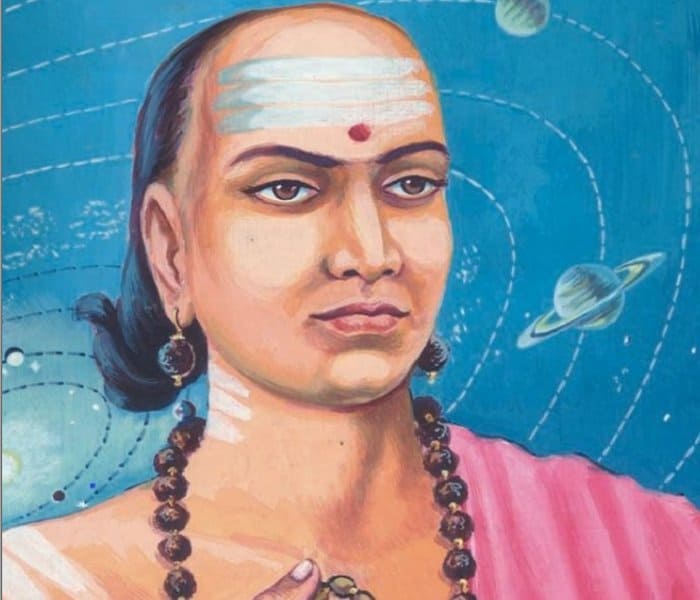
Varāhamihira (c. 505 – c. 587), also called Varāha or Mihira, was a Hindu astronomer and polymath who lived in Ujjain (Madhya Pradesh, India). He was born in the Avanti region, roughly corresponding to modern-day Malwa (part of Madhya Pradesh, India), to Adityadasa. According to one of his own works, he was educated at Kapitthaka. The Indian tradition believes him to be one of the “Nine Jewels” (Navaratnas) of the court of ruler Yashodharman Vikramaditya of Malwa. However, this claim appears for the first time in a much later text and scholars consider this claim to be doubtful because neither Varahamihira and Vikramaditya lived in the same century nor did Varahamihira live in the same century as some of the other names in the “nine jewels” list such as the much older Kalidasa.Varāhamihira’s most notable work was the Brihat Samhita, an encyclopedic work on architecture, temples, planetary motions, eclipses, timekeeping, astrology, seasons, cloud formation, rainfall, agriculture, mathematics, gemology, perfumes and many other topics. According to Varahamihira, in some verses he was merely summarizing earlier existing literature on astronomy, Shilpa Sastra and temple architecture, yet his presentation of different theories and models of design are among the earliest texts that have survived. The chapters of the Brihat Samhita and verses of Varahamihira were quoted by the Persian traveler and scholar Al Biruni.Varāhamihira is also credited with writing several authoritative texts on astronomy and astrology. He learned the Greek language, and praised the Greeks (Yavanas) in his text for being “well trained in the sciences”. Some scholars consider him to be the strong candidate as the one who understood and introduced the zodiac signs, predictive calculations for auspicious ceremonies and astrological computations.
Read More About Varahamihira / Source
Shalihotra
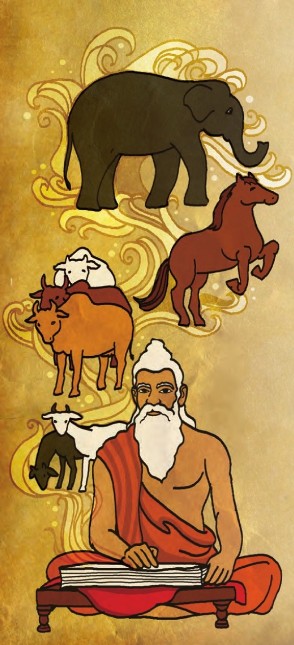
The Shalihotra Samhita is an early Indian treatise on veterinary medicine (hippiatrics), likely composed in the 3rd century BCE.It is attributed to one Shalihotra son of Hayagosha, considered the founder of veterinary sciences in Indian tradition. He is said to have lived in Sravasti (modern Sahet-Mahet on the borders of Gonda and Bahraich districts in Uttar Pradesh).
Read More About Shalihotra / Source
Pingal
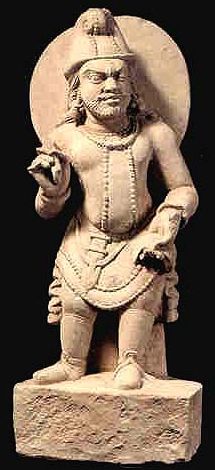
Acharya Pingala (piṅgala; c. 3rd/2nd century BCE) was the ancient Indian author of the Chandaḥśāstra (also called Pingala-sutras), the earliest known treatise on Sanskrit prosody. The Chandaḥśāstra is a work of eight chapters in the late Sūtra style, not fully comprehensible without a commentary. It has been dated to the last few centuries BCE. In the 10th-century, Halayudha wrote a commentary elaborating on the Chandaḥśāstra.
Read More About Pingal / Source
Dhanvantari
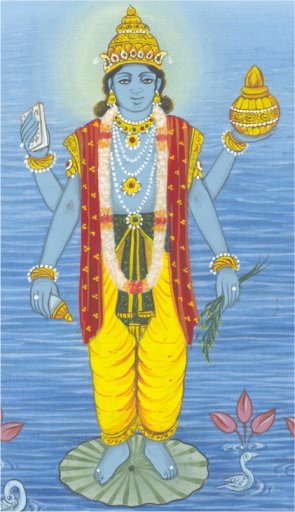
Dhanvantari : the Hindu god of medicine who has also been the king of Varanasi according to Sushruta is an avatar of Lord Vishnu. He is mentioned in the Puranas as the god of Ayurveda. He, during the Samudramanthan arose from the Ocean of Milk with the nectar of immortality. It is common practice in Hinduism for worshipers to pray to Dhanvantari seeking his blessings for sound health for themselves and/or others, especially on Dhanteras or Dhanwantari Trayodashi. The Indian Government has declared that Dhanwantari Trayodashii Kumara every year would be celebrated as “National Ayurveda Day”.
Read More About Dhanvantari / Source
Nagarjuna (metallurgist)
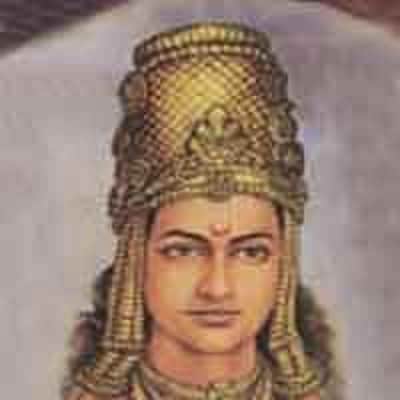
Nāgārjuna (नागार्जुन) was an Indian metallurgist and alchemist. Legends recorded by Al-Biruni in the eleventh century say that he was born in the village of Daihak near in Gujarat “one hundred years ago,” i.e., at the start of the tenth century. Chinese and Tibetan literature says he born in Vaideha desh (Vidarbha) and then migrated to nearby Satavahana dynasty. There much confusion in history between Mahayana sect founder Nagarjuna and alchemist Nagarjuna. There are evidences found of his experimental laboratory in village Nagalwadi in Maharashtra state. According to some evidences he was working on immortality and knew the extraction of iron and mercury. There is much confusion about this author in the secondary literature. A 1984 study of manuscripts and printed editions connected with the alchemist Nāgārjuna found that his name is associated with a work titled Rasendramaṅgala but that the manuscripts of the Rasaratnākara are uniformly ascribed to a different author, Nityanātha Siddha.Works ascribed in manuscripts to an author called Nāgārjuna include Jīvasūtra, Rasavaiśeṣikasūtra, Yogaśataka, Kakṣapuṭa, Yogaratnamālā and several other works (Meulenbeld lists over fifty). It is certain that several different authors used the name Nāgārjuna to write works on medicine and alchemy, and that these authors are to be distinguished from the second-century Buddhist philosopher of the same name.
The most recent comprehensive discussion of the complicated text-historical issues connected with the name Nāgārjuna is given in the History of Indian Medical Literature.
Read More About Nagarjuna (metallurgist) / Source
Kanada
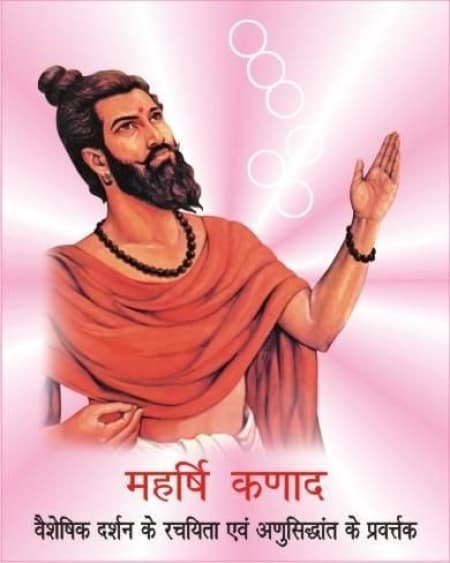
Kanada (Sanskrit: कणाद, IAST: Kaṇāda), also known as Kashyapa, Ulūka, Kananda and Kanabhuk, was an ancient Indian natural scientist and philosopher who founded the Vaisheshika school of Indian philosophy that also represents the earliest Indian physics. Estimated to have lived sometime between 6th century to 2nd century BCE, little is known about his life. His traditional name “Kanada” means “atom eater”, and he is known for developing the foundations of an atomistic approach to physics and philosophy in the Sanskrit text Vaiśeṣika Sūtra. His text is also known as Kanada Sutras, or Aphorisms of Kanada.The school founded by Kanada explains the creation and existence of the universe by proposing an atomistic theory, applying logic and realism, and is one of the earliest known systematic realist ontology in human history. Kanada suggested that everything can be subdivided, but this subdivision cannot go on forever, and there must be smallest entities (parmanu) that cannot be divided, that are eternal, that aggregate in different ways to yield complex substances and bodies with unique identity, a process that involves heat, and this is the basis for all material existence. He used these ideas with the concept of Atman (soul, Self) to develop a non-theistic means to moksha. If viewed from the prism of physics, his ideas imply a clear role for the observer as independent of the system being studied.
Kanada’s ideas were influential on other schools of Hinduism, and over its history became closely associated with the Nyaya school of Hindu philosophy.Kanada’s system speaks of six properties (padārthas) that are nameable and knowable. He claims that these are sufficient to describe everything in the universe, including observers. These six categories are dravya (substance), guna (quality), karman (motion), samanya (universal), visesa (particular), and samavaya (inherence). There are nine classes of substances (dravya), some of which are atomic, some non-atomic, and others that are all-pervasive.
The ideas of Kanada span a wide range of fields, and they influenced not only philosophy, but possibly scholars in other fields such as Charaka who wrote a medical text that has survived as Charaka Samhita.
Read More About Kanada / Source
Brahmagupta
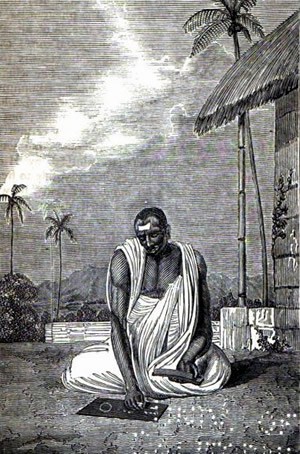
Brahmagupta (c. 598 CE – c. 668 CE) was an Indian mathematician and astronomer. He is the author of two early works on mathematics and astronomy: the Brāhmasphuṭasiddhānta (BSS, “correctly established doctrine of Brahma”, dated 628), a theoretical treatise, and the Khaṇḍakhādyaka (“edible bite”, dated 665), a more practical text.
Brahmagupta was the first to give rules to compute with zero. The texts composed by Brahmagupta were in elliptic verse in Sanskrit, as was common practice in Indian mathematics. As no proofs are given, it is not known how Brahmagupta’s results were derived.
Read More About Brahmagupta / Source
Sridhara Acharya
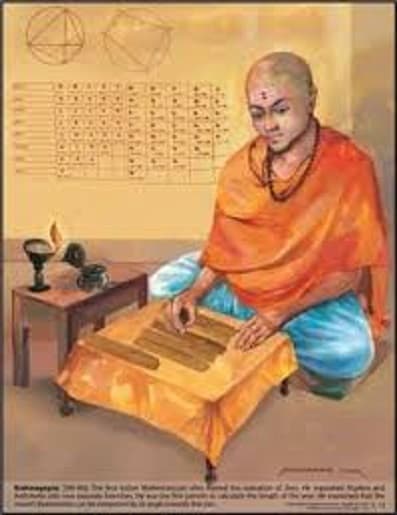
Śrīdhara, Śrīdharācāryya or Śrīdhara Ācāryya (c. 870 CE – c. 930 CE) was an Indian mathematician, Sanskrit pandit and philosopher. He was born in Bhuriśreṣṭi (Bhurisriṣṭi or Bhurśuṭ) village in South Rādha (at present day Hugli). His father’s name was Baladevācārya and his mother’s name was Acchoka Bai. His father was a Sanskrit pandit and philosopher.
Read More About Sridhara Acharya / Source
Baudhayana
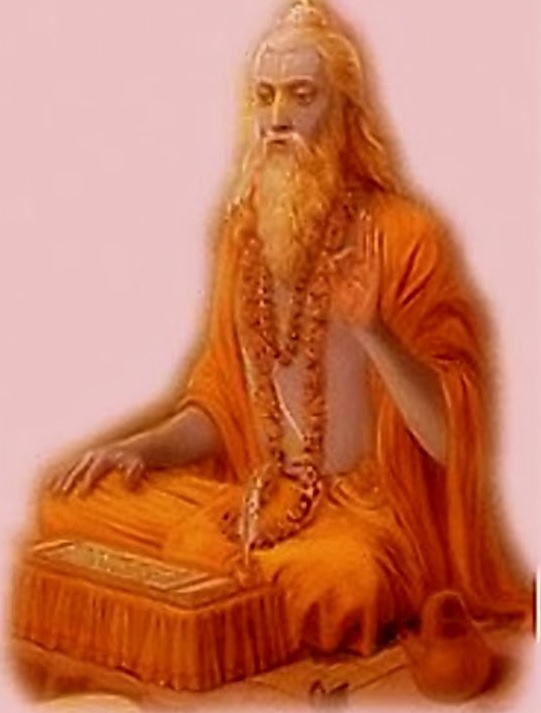
The Baudhāyana sūtras are a group of Vedic Sanskrit texts which cover dharma, daily ritual, mathematics, etc. They belong to the Taittiriya branch of the Krishna Yajurveda school and are among the earliest texts of the genre, perhaps compiled in the 8th to 6th centuries BCE.The Baudhayana sūtras consist of six texts:
the Śrautasûtra, probably in 19 Praśnas (questions),
the Karmāntasûtra in 20 Adhyāyas (chapters),
the Dvaidhasûtra in 4 Praśnas,
the Grihyasutra in 4 Praśnas,
the Dharmasûtra in 4 Praśnas and
the Śulbasûtra in 3 Adhyāyas.The Baudhāyana Śulbasûtra is noted for containing several early mathematical results, including an approximation of the square root of 2 and the statement of the Pythagorean theorem.
Read More About Baudhayana / Source
Madhavkar
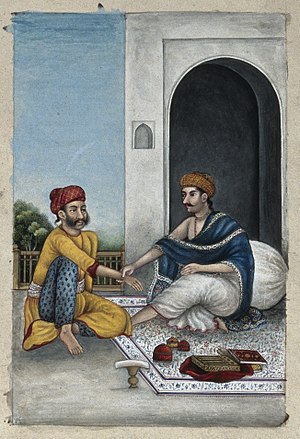
Madhava (or Madhava-kara) was a 7th-century or early 8th-century Indian Ayurveda practitioner who wrote the Rug-vinischaya, also known as the Madhava Nidana, which soon assumed a position of authority. In the 79 chapters of this book, he lists diseases along with their causes, symptoms, and complications. He also included a chapter on smallpox (masūrikā).
Read More About Madhavkar / Source
Bhaskaracharya
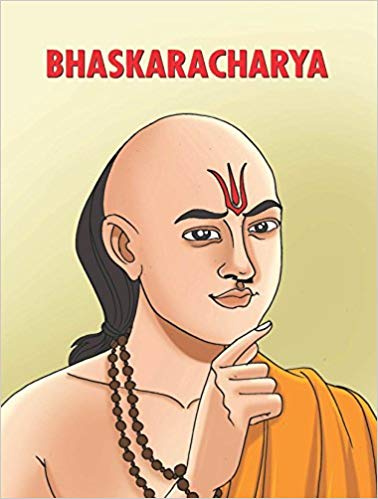
Bhāskara (c. 1114–1185) also known as Bhāskarācārya (“Bhāskara, the teacher”), and as Bhāskara II to avoid confusion with Bhāskara I, was an Indian mathematician and astronomer. He was born in Bijapur in Karnataka.Born in a Deshastha Brahmin family of scholars, mathematicians and astronomers, Bhaskara was the leader of a cosmic observatory at Ujjain, the main mathematical centre of ancient India. Bhāskara and his works represent a significant contribution to mathematical and astronomical knowledge in the 12th century. He has been called the greatest mathematician of medieval India. His main work Siddhānta-Śiromani, (Sanskrit for “Crown of Treatises”) is divided into four parts called Līlāvatī, Bījagaṇita, Grahagaṇita and Golādhyāya, which are also sometimes considered four independent works. These four sections deal with arithmetic, algebra, mathematics of the planets, and spheres respectively. He also wrote another treatise named Karaṇā Kautūhala.Bhāskara’s work on calculus predates Newton and Leibniz by over half a millennium. He is particularly known in the discovery of the principles of differential calculus and its application to astronomical problems and computations. While Newton and Leibniz have been credited with differential and integral calculus, there is strong evidence to suggest that Bhāskara was a pioneer in some of the principles of differential calculus. He was perhaps the first to conceive the differential coefficient and differential calculus.On 20 November 1981 the Indian Space Research Organisation (ISRO) launched the Bhaskara II satellite honouring the mathematician and astronomer.
Read More About Bhaskaracharya / Source
Nagarjuna
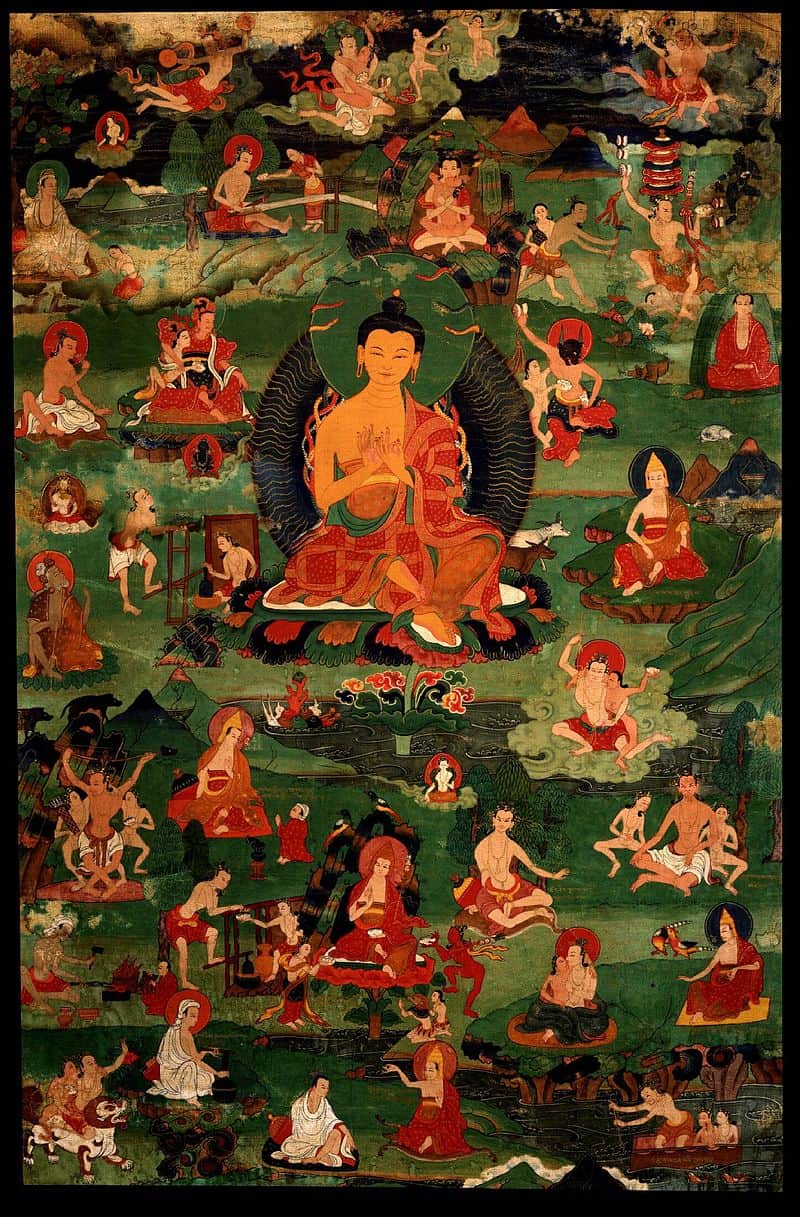
Nagarjuna (c. 150 – c. 250 CE), (Tibetan: mGon-po Klu-grub) is widely considered one of the most important Buddhist philosophers. Along with his disciple Āryadeva, he is considered the founder of the Madhyamaka school of Mahāyāna Buddhism. Nāgārjuna is also credited with developing the philosophy of the Prajñāpāramitā sūtras and, by some sources, with having revealed these scriptures to the world after recovering them from the nāgas. He is traditionally thought to have written many treatises on rasayana, as well as serving a term as the head of Nālandā.
Read More About Nagarjuna / Source
Bhaskar

Bhāskara (c. 600 – c. 680) (commonly called Bhaskara I to avoid confusion with the 12th-century mathematician Bhāskara II) was a 7th-century mathematician, who was the first to write numbers in the Hindu decimal system with a circle for the zero, and who gave a unique and remarkable rational approximation of the sine function in his commentary on Aryabhata’s work. This commentary, Āryabhaṭīyabhāṣya, written in 629 CE, is among the oldest known prose works in Sanskrit on mathematics and astronomy. He also wrote two astronomical works in the line of Aryabhata’s school, the Mahābhāskarīya and the Laghubhāskarīya.On 7 June 1979 the Indian Space Research Organisation launched Bhaskara I honouring the mathematician.
Read More About Bhaskar / Source
Lagadha
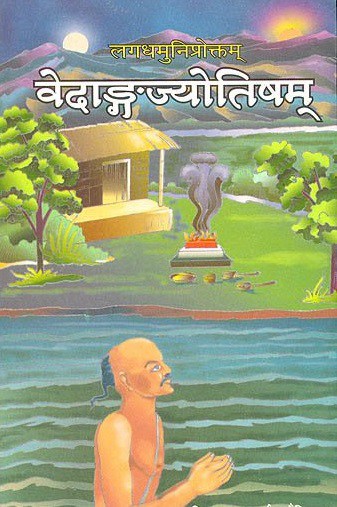
Vedāṅga Jyotiṣa, or Jyotiṣavedāṅga (Devanagari: वेदाङ्ग ज्योतिष) (VJ), is one of earliest known Indian texts on astronomy (Jyotisha). The extant text is dated to the final centuries BCE, but it may be based on a tradition reaching back to about 700-600 BCE.The text is foundational to Jyotisha (astronomy), one of the six Vedanga disciplines. Its author is traditionally named as Lagadha.
Read More About Lagadha / Source
Agastya
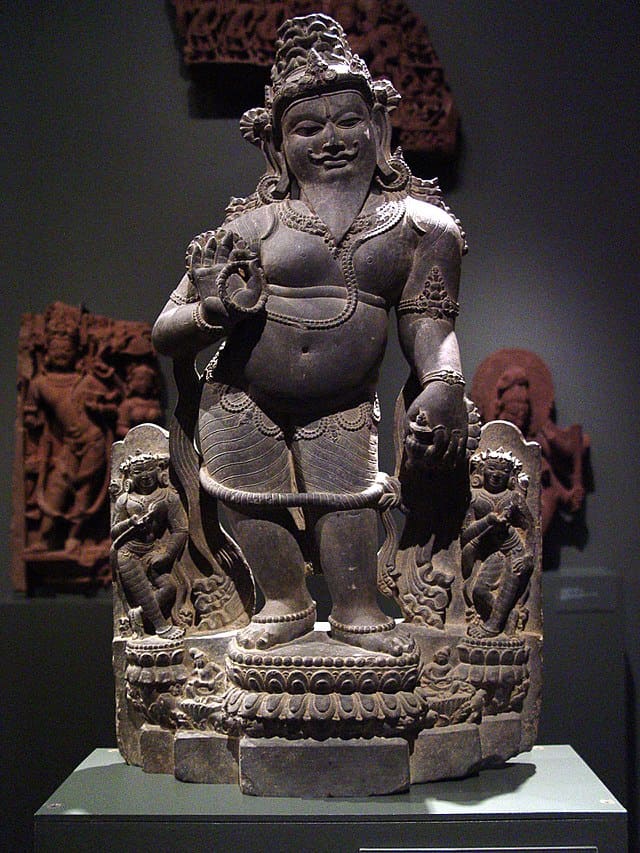
Agastya was a revered Vedic sage of Hinduism. In the Indian tradition, he is a noted recluse and an influential scholar in diverse languages of the Indian subcontinent. He and his wife Lopamudra are the celebrated authors of hymns 1.165 to 1.191 in the Sanskrit text Rigveda and other Vedic literature.In Valmiki Ramayan, it is stated that Asuras hid inside the ocean so that the Devas couldn’t harm them. The Devas requested Rishi Agastya for help, and he drank the entire ocean using his austerity and mystic powers. The Devas killed the Asuras, and asked the sage to return the ocean’s water. The water was returned by river Ganga post penance of Bhagirath.
In some scriptures, it is stated that during Lord Shiva’s marriage, everyone in the universe went to witness the event in the Himalayas, in the North. Bhūmi Devi or the Earth Goddess was not able to bear this misbalance and prayed to Lord Shiva for help, who then told Agastya to go to the south end. Rishi Agastya went to the south and the earth’s balance was restored. On one side there was the entire universe and on the other side was Agastya, whose austerity power and aura balanced the earth.
Read More About Agastya / Source
Aryabhata II
Āryabhaṭa (c. 920 – c. 1000) was an Indian mathematician and astronomer, and the author of the Maha-Siddhanta. The numeral II is given to him to distinguish him from the earlier and more influential Āryabhaṭa I. Aryabhata’s most eminent work was Mahasiddhanta. The treatise consists of eighteen chapters and was written in the form of verse in Sanskrit. The initial twelve chapters deals with topics related to mathematical astronomy and covers the topics that Indian mathematicians of that period had already worked on. The various topics that have been included in these twelve chapters are: the longitudes of the planets, lunar and solar eclipses, the estimation of eclipses, the lunar crescent, the rising and setting of the planets, association of the planets with each other and with the stars.
Read More About Aryabhata II / Source
Mahavira (Mathematician)

Mahāvīra (or Mahaviracharya, “Mahavira the Teacher”) was a 9th-century Jain mathematician possibly born in or close to the present day city of Mysore, in southern India. He authored Gaṇitasārasan̄graha (Ganita Sara Sangraha) or the Compendium on the gist of Mathematics in 850 AD. He was patronised by the Rashtrakuta king Amoghavarsha. He separated astrology from mathematics. It is the earliest Indian text entirely devoted to mathematics. He expounded on the same subjects on which Aryabhata and Brahmagupta contended, but he expressed them more clearly. His work is a highly syncopated approach to algebra and the emphasis in much of his text is on developing the techniques necessary to solve algebraic problems. He is highly respected among Indian mathematicians, because of his establishment of terminology for concepts such as equilateral, and isosceles triangle; rhombus; circle and semicircle. Mahāvīra’s eminence spread throughout South India and his books proved inspirational to other mathematicians in Southern India. It was translated into the Telugu language by Pavuluri Mallana as Saara Sangraha Ganitamu.He discovered algebraic identities like a3 = a (a + b) (a − b) + b2 (a − b) + b3. He also found out the formula for nCr as [n (n − 1) (n − 2) … (n − r + 1)] / [r (r − 1) (r − 2) … 2 * 1]. He devised a formula which approximated the area and perimeters of ellipses and found methods to calculate the square of a number and cube roots of a number. He asserted that the square root of a negative number does not exist.
Read More About Mahavira (Mathematician) / Source

